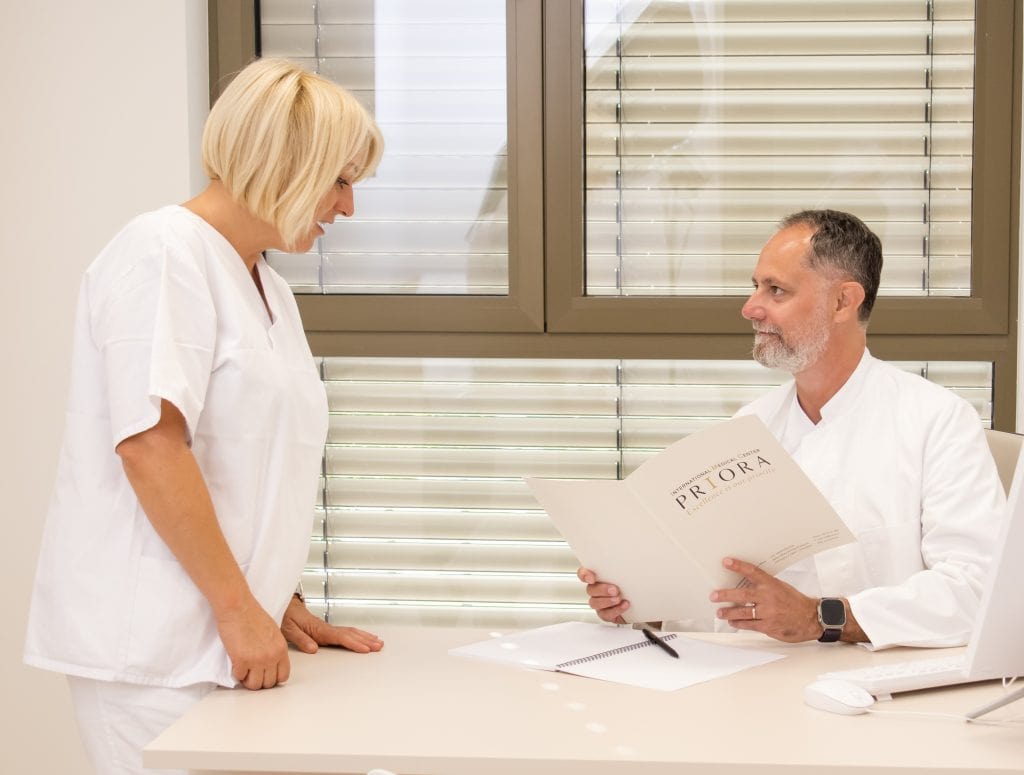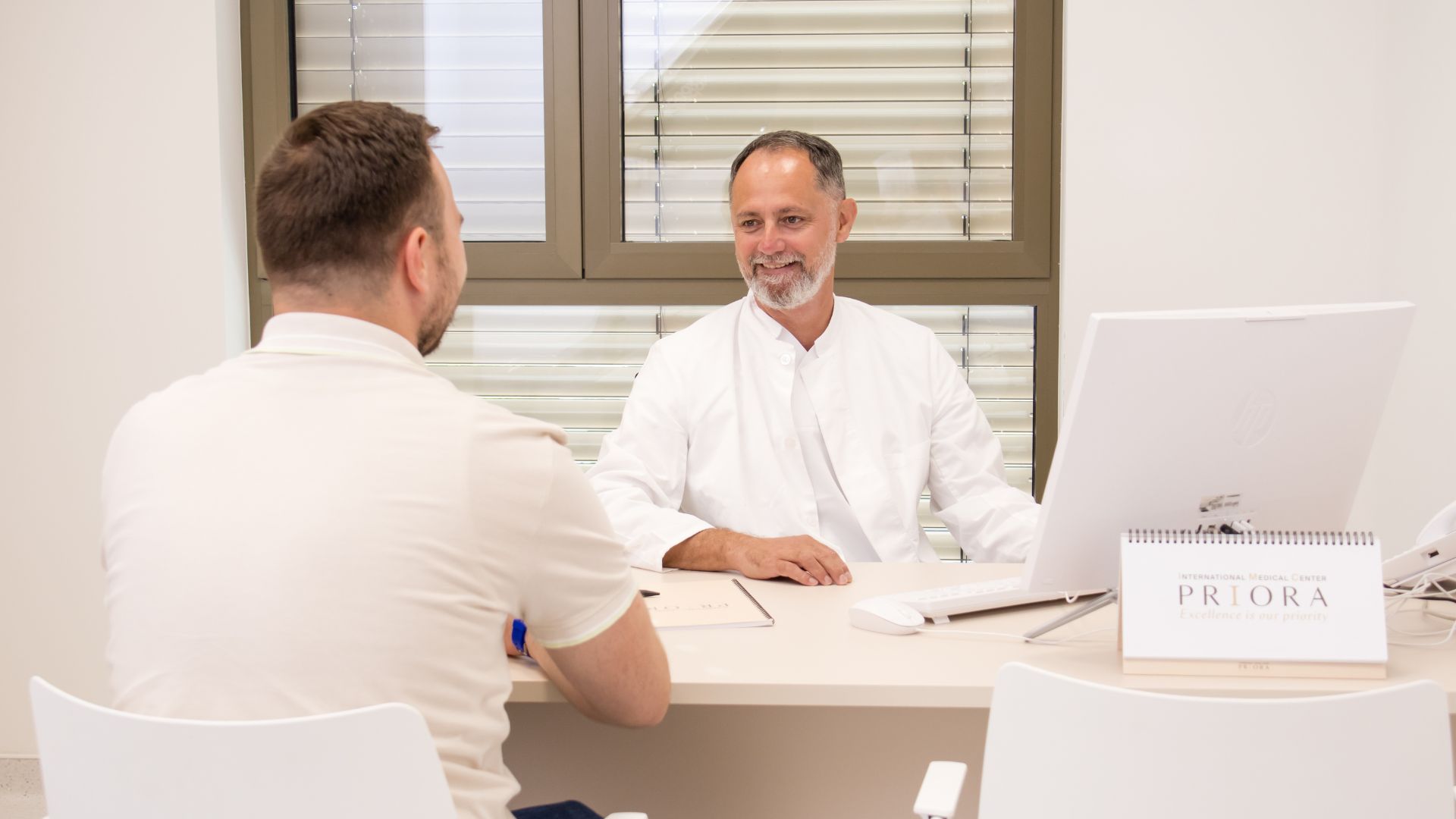Artificial joints, especially hip endoprostheses, have become so advanced today — as have surgical techniques — that patients can lead completely everyday lives without limitations after implantation, says Dr. Ivan Karlak.
Behind orthopaedic surgeon Dr. Ivan Karlak stands many years of experience in endoprosthetics, traumatology, and minimally invasive procedures. He is one of the leading experts in hip, knee, and shoulder joint replacements, as well as in treating long bone fractures and complex pelvic injuries. He is the Head of the Orthopaedic Department at IMC Priora.
The youngest patient to receive an artificial hip was only 16 years old? Is it becoming a trend for younger people to require endoprostheses, or are these still exceptions?
– It is true that today, younger patients increasingly require artificial joints, but it is still most commonly linked to older age, when we often see joint wear, osteoarthritis, or injuries.
What psychological impact does it have on a young patient who learns they need an endoprosthesis?
– Artificial joints, especially hip replacements, have become so advanced — as have surgical techniques — that patients can live completely everyday lives without restrictions after surgery. They can even participate in sports; there are no forbidden movements, and the prosthesis typically lasts around 20 to 25 years, sometimes longer. Patients who understand why they need an endoprosthesis and what life will look like after surgery are usually happy because, before the procedure, they lived with constant pain, limited mobility, and were unable to engage in desired activities.

When are hip, knee, or shoulder endoprostheses recommended? How do you know when it’s time?
– The long-term prognosis is excellent because artificial joints last around 25 years, as mentioned. If the patient’s life expectancy exceeds that, another replacement may be needed later on. But I often tell my patients: do we ever ask the dentist how long a filling will last? Usually not — we get one, and when the tooth hurts again, it’s replaced. There’s always a solution.
When are hip, knee, or shoulder endoprostheses recommended? How do you know when it’s time? How demanding is the recovery?
– When all conservative treatments stop working, and the damaged joint significantly reduces the patient’s quality of life, it’s time for an endoprosthesis. This means the patient can no longer perform routine daily activities, experiences constant pain requiring regular painkillers, and physical therapy or injections no longer help.
– Thanks to new surgical techniques — minimally invasive operations — recovery is speedy. Patients usually return to everyday life after about a month, and to sports within two to three months. Recovery requires some effort, but it is much shorter than before, and today it is complete. There are no significant restrictions after joint replacement. A patient with an artificial hip or knee may not become a professional athlete, but they can certainly participate in recreational sports and live their life as they did before the illness.
What would you recommend to patients who fear surgery or have misconceptions about artificial joints?
– I would definitely recommend they come in for a consultation to talk to a doctor who can explain the procedure, rehabilitation, and what to expect after hip replacement. Once they have this information, their fear significantly decreases, and it becomes much easier for them to decide on the procedure.

How available are modern technologies and materials for endoprostheses in Croatia today?
Croatia follows global trends in prosthesis materials, types, and surgical techniques, including minimally invasive approaches and robotics. Our country is not lagging behind the rest of the world.
What contributes to conditions that require artificial joint implantation? Genetics, injuries…?
Whoever finds the definitive answer to that could win a Nobel Prize. Genetics plays a significant role, as does lifestyle. Many people mistakenly believe they protect their joints by avoiding physical activity — it’s actually the opposite. Moderate recreational exercise helps preserve joints. It’s essential to exercise regularly and properly, as this is how our joints can last the longest.
Hormonal changes also affect our joints
– Absolutely. Hormones play a crucial role in our bodies, and any change in hormonal balance can accelerate joint wear or lead to other conditions that affect bones or cartilage, resulting in osteoarthritis or joint pain.
How can we personally contribute to joint health and prevent severe damage?
– Prevention is key: maintain regular physical activity, healthy body weight, and proper nutrition. One extra kilogram of body weight equals four kilograms more pressure on the knees or hips. Every kilogram counts. Mathematically speaking, reducing body weight by five kilograms lowers pressure on the hip and knee joints by as much as 20 kilograms.
Has any patient in particular stayed in your memory?
– I especially remember young people who were almost immobile, living in daily pain, and then return for a follow-up, saying they are active again and living everyday lives — that brings absolute satisfaction. But I also recall elderly patients, like one who was 87 and hesitant about surgery due to age, but suffered constant pain. After surgery, she was able to walk to the market again without difficulty. Relieving pain and restoring mobility always leaves a deep impression. The oldest patient I operated on was 102 years old. I tell elderly patients: we don’t know how long you’ll live, but we want the rest of your life to be pain-free and independent. It’s also important to note that people with damaged joints are at high risk of falling, which can cause fractures that are sometimes fatal in old age.